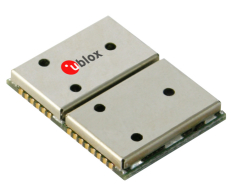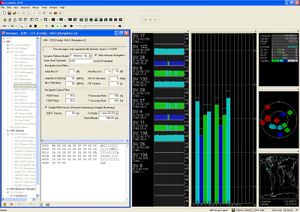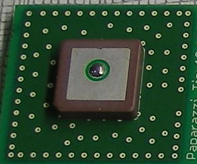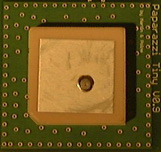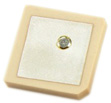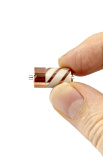Difference between revisions of "Sensors/GPS"
| Line 42: | Line 42: | ||
==GPS configuration using U-Center== | ==GPS configuration using U-Center== | ||
[[Image:U-center_screencap.jpg|thumb|u-center configuration software]] | |||
[http://www.u-blox.com/products/u_center.html U-Center] is a very comprehensive Windows freeware program intended for the configuration and evaluation of u-blox receivers. | [http://www.u-blox.com/products/u_center.html U-Center] is a very comprehensive Windows freeware program intended for the configuration and evaluation of u-blox receivers. | ||
* [http://www.u-blox.com/products/u_center.html Download u-center] (password protected download, use ''paparazzi'' for username & password) | * [http://www.u-blox.com/products/u_center.html Download u-center] (password protected download, use ''paparazzi'' for username & password) | ||
| Line 49: | Line 50: | ||
The u-blox and Tiny UARTs both operate at 3.3V TTL levels and are 5V TTL tolerant. You must use a level shifter such as the common MAX232 to connect these devices to a standard PC serial port. The easiest and most recommended method is to connect to a USB port instead of serial by using a $20 [http://www.ftdichip.com/Products/EvaluationKits/TTL-232R.htm FTDI USB-TTL converter cable] available from Digikey, Mouser, or direct from FTDI. Other similar converters are available from [http://www.pololu.com/products/pololu/0391/ pololu] or [http://www.sparkfun.com/commerce/product_info.php?products_id=199 sparkfun]. A stand-alone GPS such as the SAM-LS will require clean 3.3V/50mA power and a common ground with the TTL converter. | The u-blox and Tiny UARTs both operate at 3.3V TTL levels and are 5V TTL tolerant. You must use a level shifter such as the common MAX232 to connect these devices to a standard PC serial port. The easiest and most recommended method is to connect to a USB port instead of serial by using a $20 [http://www.ftdichip.com/Products/EvaluationKits/TTL-232R.htm FTDI USB-TTL converter cable] available from Digikey, Mouser, or direct from FTDI. Other similar converters are available from [http://www.pololu.com/products/pololu/0391/ pololu] or [http://www.sparkfun.com/commerce/product_info.php?products_id=199 sparkfun]. A stand-alone GPS such as the SAM-LS will require clean 3.3V/50mA power and a common ground with the TTL converter. | ||
* U-blox occasionally releases firmware updates. | * U-blox occasionally releases firmware updates. Log on to the u-blox website using ''paparazzi'' for username & password to view or download the latest firmware images. There have never been any updates released for the Antaris-4 series used in the Tiny. | ||
Start U-center and choose your com port from the pull down list under the connect button near the top left corner of the window. Choose your baudrate from the pull down box to the right of the connect button or select the auto-baud button to the right of that. U-blox default is 9600 baud. This is usually changed to 19200 baud to accomodate the 4Hz update rate. | Start U-center and choose your com port from the pull down list under the connect button near the top left corner of the window. Choose your baudrate from the pull down box to the right of the connect button or select the auto-baud button to the right of that. U-blox default is 9600 baud. This is usually changed to 19200 baud to accomodate the 4Hz update rate. | ||
[[Image:U-center_buttons.jpg|connect, baud, and autobaud buttons]] | |||
<br style="clear:both"> | |||
Open the message window (menu View->messages view) to start the configuration process by changing the following settings: | Open the message window (menu View->messages view) to start the configuration process by changing the following settings: | ||
Revision as of 15:55, 16 January 2007
GPS Receivers
We currently use and support two different GPS Receivers from u-blox.
uBlox LEA GPS Receiver
The Tiny uses the new LEA-4P from uBlox. It features their new Antaris-4 technology and uses uBlox's more efficient UBX binary protocol. This module is a surface mount package which is soldered directly onto the target board (Tiny in this case).
uBlox SAM-LS GPS Smart Antenna
The other boards use a stand alone module from u-blox called the SAM-LS. It is an integrated TIM-LP module with a ceramic patch antenna. This processor also runs on 4hz and is reprogrammed to run on UBX protocol. Both modules have proven reliable and robust. With battery back up they show hot starts of around a couple seconds. The LEA-LA processor weighs a couple grams, while the SAM-LS module with antenna and shielding weighs about 20grams.
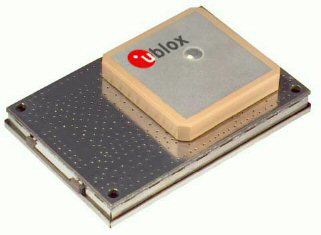 ublox SAM-LS GPS Smart Antenna
ublox SAM-LS GPS Smart Antenna
This section should be rather short as the GPS receivers from Ublox are pretty much ready to go when you get them. Some things are different in protocol however so you will need to program them using Ublox's software.
Sourcing from u-blox
uBlox keeps tight control over the distribution of their products. They must be obtained DIRECTLY from their own reseller offices. These offices may not be available in your area, for example Canada does not have a reseller. Sample quantities can be obtained from uBlox but overnight or 2 day shipping is required which drives the cost up considerably. While it is a large hassle obtaining these devices, it is undoubtedly worth it. Check with project members to see if they have a few lying around first.
GPS & Control Boards
The autopilot hardware currently uses two different GPS receivers and are summarized below.
Tiny AP
This board is designed to have both the GPS receiver and antenna soldered directly to it. It accepts any receiver from the u-blox LEA. Keep in mind that if you are not using a GPS model with flash (LEA-LA) you will need to configure the AP to send boot commands to the GPS on start up. The programmable models include Flash EEPROM internally and save their configurations indefinitely.
Classix and Lite AP
These boards are configured to connect to an externally mounted u-blox SAM-LS module The SAM-LS runs at 3.3v(Lite uses a resistor bridge). The only suggestion here is to remove the case on bottom, and solder the 4 wires directly to the TIM GPS module(GND (pin 1) ,VCC (pin 2),TX (Pin 5),RX (pin 4)) u-blox has the pinout in the manual for the GPS.
1.2.1 AVR and RoboStix AP
This board requires a GPS board which includes a 3.3v regulator and a resistor bridge. The PCB files for this board are in the CVS under SAM-LS.
GPS configuration using U-Center
U-Center is a very comprehensive Windows freeware program intended for the configuration and evaluation of u-blox receivers.
- Download u-center (password protected download, use paparazzi for username & password)
- Note: You must install the UART tunnel to enable direct access to the built-in GPS on the Tiny.
The u-blox and Tiny UARTs both operate at 3.3V TTL levels and are 5V TTL tolerant. You must use a level shifter such as the common MAX232 to connect these devices to a standard PC serial port. The easiest and most recommended method is to connect to a USB port instead of serial by using a $20 FTDI USB-TTL converter cable available from Digikey, Mouser, or direct from FTDI. Other similar converters are available from pololu or sparkfun. A stand-alone GPS such as the SAM-LS will require clean 3.3V/50mA power and a common ground with the TTL converter.
- U-blox occasionally releases firmware updates. Log on to the u-blox website using paparazzi for username & password to view or download the latest firmware images. There have never been any updates released for the Antaris-4 series used in the Tiny.
Start U-center and choose your com port from the pull down list under the connect button near the top left corner of the window. Choose your baudrate from the pull down box to the right of the connect button or select the auto-baud button to the right of that. U-blox default is 9600 baud. This is usually changed to 19200 baud to accomodate the 4Hz update rate.
![]()
Open the message window (menu View->messages view) to start the configuration process by changing the following settings:
1. Right Click on the NMEA Icon and choose disable child 2. Choose ubx->cfg->nav2 - set it to use Airborne 4G (tells the Kalman filter to expect significant changes in direction) 3. Ubx->cfg->rate - change the period to 250ms (4 Hz position updates) 4. ubx->cfg->prt - set USART0 to 19200bps (must match the value in your Airframe file) 5. Change the baudrate of U-Center to 19200bps if the connection is lost at this point 6. ubx->cfg->sbas : Disable (SBAS appears to cause occasional severe altitude calcuation errors) 7. ubx->nav (not cfg->nav): double click on posutm, status, svinfo, velned. They should change from grey to black 8. ubx->cfg->cfg : save current config, click "send" to permanently save these settings to the receiver.
To backup the configuration to a file on your PC: under the tools menu, choose GPS config, then click GPS>>file. This file can be re-loaded in a similar manner to configure additional identical receivers. Be sure to check the box "Save to ROM" when reloading a configuration file to make the changes permanent.
Antennas
Sangshin
Part of interest: KSA-ST1580MS13
The Tiny 0.99 (not 0.9) and 1.1 were designed for this antenna however this part has not been verified for best performance yet.
Size: 13 x 13 mm
Center Frequency: 1580 MHz
Bandwidth: 5 MHz
@Fo: -15 dB
GAIN (dBi): 0 dBi
Ground Plane: 50 x 50 mm
Available From
Systronic INC. - Alberta, Canada
20mm Salvaged "No Name" Antenna
Reportedly the best match for the Tiny 0.9 through 1.1. No source for this antenna has been found yet.
Availability
These are salvaged parts and turn up from time to time in our group. Check around.
EMTAC 18mm
The part number for the 1580MHz 18x18mm is ANA1580T18D40 and is not listed on their website.
Availability
Direct from TransplantGPS in MN, USA. The antennas should be in stock at a cost of $3.55ea but they may want you to order > $50 USD per order.
Sarantel GeoHelix-P2
GeoHelix-P2 Passive GPS Antenna [datasheet]
This antenna apparently works great with the u-blox series GPS receivers so is not tied to any version of the board. It does not mount directly to the board. Impedence is 50ohm so almost any radio coax will work. Remember the antenna is passive with no RF amplification done at the antenna so every inch of extra coax introduces loss. Adding a ground plane (tin foil even) near the base of the antenna with a target size of 50mm x 50mm should also increase the performance.
Availability
Direct from Sarantel @ cost of approx $18 USD each
